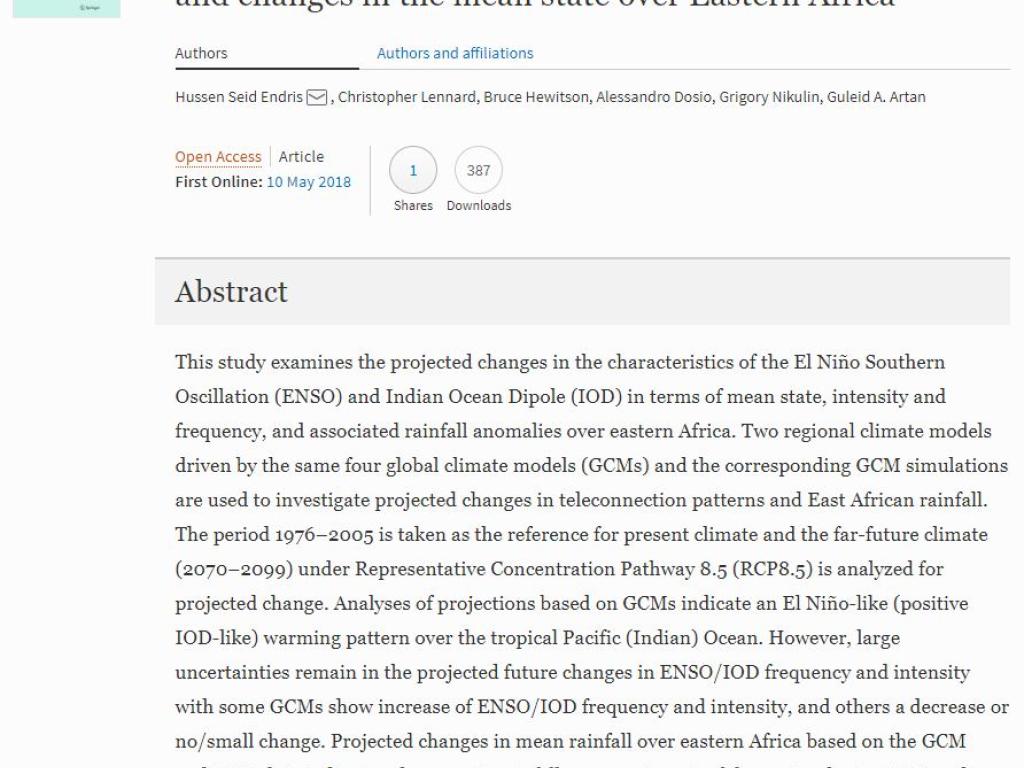Future changes in rainfall associated with ENSO, IOD and changes in the mean state over Eastern Africa

BY Endris, H. S., Lennard, C., Hewitson, B., Dosio, A., Nikulin, G., Artan, G. • 2018
This study examines the projected changes in the characteristics of the El Niño Southern Oscillation (ENSO) and Indian Ocean Dipole (IOD) in terms of mean state, intensity and frequency, and associated rainfall anomalies over eastern Africa. Two regional climate models driven by the same four global climate models (GCMs) and the corresponding GCM simulations are used to investigate projected changes in teleconnection patterns and East African rainfall. The period 1976–2005 is taken as the reference for present climate and the far-future climate (2070–2099) under Representative Concentration Pathway 8.5 (RCP8.5) is analyzed for projected change. Analyses of projections based on GCMs indicate an El Niño-like (positive IOD-like) warming pattern over the tropical Pacific (Indian) Ocean. However, large uncertainties remain in the projected future changes in ENSO/IOD frequency and intensity with some GCMs show increase of ENSO/IOD frequency and intensity, and others a decrease or no/small change. Projected changes in mean rainfall over eastern Africa based on the GCM and RCM data indicate a decrease in rainfall over most parts of the region during JJAS and MAM seasons, and an increase in rainfall over equatorial and southern part of the region during OND, with the greatest changes in equatorial region. During ENSO and IOD years, important changes in the strength of the teleconnections are found. During JJAS, when ENSO is an important driver of rainfall variability over the region, both GCM and RCM projections show an enhanced La Niña-related rainfall anomaly compared to the present period. Although the long rains (MAM) have little association with ENSO in the reference period, both GCMs and RCMs project stronger ENSO teleconnections in the future. On the other hand, during the short rains (OND), a dipole future change in rainfall teleconnection associated with ENSO and IOD is found, with a stronger ENSO/IOD related rainfall anomaly over the eastern part of the domain, but a weaker ENSO/IOD signal over the southern part of the region. This signal is consistent and robust in all global and regional model simulations. The projected increase in OND rainfall over the eastern horn of Africa might be linked with the mean changes in SST over Indian and Pacific Ocean basins and the associated Walker circulations.
ACDI Authors